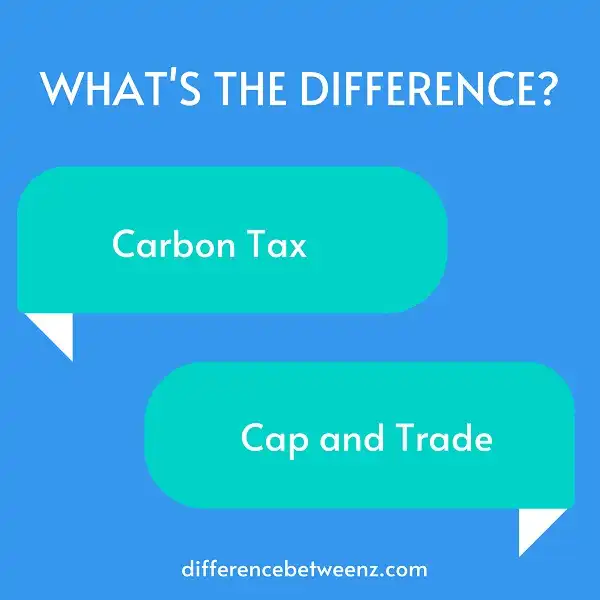Do you want to make smarter decisions on how your business approaches environmental sustainability? Are you unsure of the different paths available and what benefits they offer? If so, you are not alone. As more businesses take proactive steps towards reducing their carbon emissions, there is a greater need for them to understand the differences between a Carbon Tax and Cap and Trade policies. Both can have positive implications for companies who implement them but knowing which one will provide optimal results is key when it comes to achieving successful outcomes. In this guide, we’ll explore how these two approaches work, their respective merits and drawbacks, as well as what actionable item you can derive from each option that will help your business become environmentally friendly in a cost-effective way.
What is Carbon Tax?
Carbon Tax is a policy that levies a fee on activities that emit carbon dioxide and other greenhouse gases (GHG). Carbon taxes are designed to reduce GHG emissions by raising prices on goods and services that generate emissions, as they provide an incentive to install efficient technologies and switch to lower-carbon alternatives.
Carbon taxes are also used to raise funds for renewable energy or other climate change initiatives. Carbon Tax can help countries meet their climate goals by providing strong economic signals to both producers and consumers of carbon-emitting products. Carbon taxes are estimated to be significantly more cost-effective than other policies because they allow companies to make the decisions most efficiently for their particular circumstances.
What is Cap and Trade?
- Cap and Trade is an economic policy instrument used to limit the amount of pollution that businesses are allowed to emit. It works by setting a cap on the total amount of pollutants that can be discharged, then trading permits between companies or individuals who use them to stay within their respective emission limits.
- The goal of Cap and Trade is to reduce CO2 emissions in line with global targets while still allowing economic growth. Cap and Trade incentivize businesses to make smarter decisions about energy efficiency and cleaner energy sources, ultimately resulting in a healthier environment.
- By enabling companies to stay within their designated emission caps without having to exclude any pollutant source outright, Cap and Trade ensure that these goals are achievable in a fair, cost-effective manner.
Difference between Carbon Tax and Cap and Trade
Carbon Tax and Cap and Trade are two solutions used to reduce the environmental impact of burning fossil fuels. Carbon Tax is a policy that puts a price, or tax, on carbon dioxide emissions.
- This means that companies emitting high levels of carbon dioxide into the atmosphere will incur additional financial costs. Cap and Trade work by setting a limit, or cap, on how much carbon dioxide a company is permitted to emit.
- If companies exceed this cap, they must then buy ‘credits’ from other companies which have reduced their emissions below the established threshold – providing economic incentives to reduce emissions below the limit set by the government.
- Carbon Tax and Cap and Trade solutions provide different economic penalties for those who pollute too heavily, both of which create incentives to use less energy and make environmentally responsible choices.
Conclusion
Both carbon taxes and cap-and-trade systems are effective methods for reducing emissions and fighting climate change. Carbon taxes have the benefit of being more flexible, while cap-and-trade systems provide more certainty about the target reduction in emissions. Ultimately, which system is used will depend on the preferences of the government and the people.


